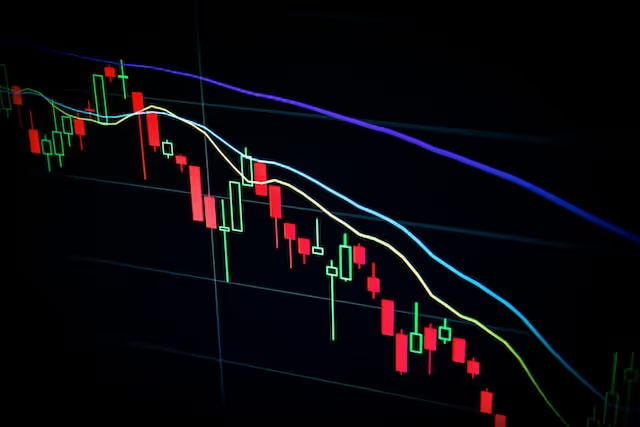
Blog
Managed Funds Explained for NZ Investors
(And 7 reasons why you might want a slice of one)
Investing can feel like trying to assemble flat-pack furniture without instructions: confusing, time-consuming, and potentially leading to a few extra screws. Enter managed funds, the pre-assembled bookshelf of the investment world. You still get the benefits, but without the headache.
What Is a Managed Fund?*
In a managed fund, your money joins forces with other investor’s funds and is professionally managed, typically in a diversified mix of assets like shares, bonds, and property.
Managed funds contain a pool of investments that is managed professionally by an expert fund manager. As your money is pooled together with other investor’s money to create a single fund, there can be significant investor benefits which include an instant increase in buying strength and tax efficiencies. The investment manager buys and sells stocks (shares) or other assets on behalf of all investors.
The goal? To grow your investment over time while you sip your coffee and do the things that give you satisfaction, rather than fiddling around with your investments!
Why Should You Care? Managed Fund Benefits
1. Diversification Without the Headache
Instead of picking individual stocks and bonds, with a managed fund your money is spread across a variety of assets. Most managed funds are invested in a diversified array of stocks and bonds, and many also include a portion of investments in property. The number of investments held by a single managed fund can number as many as 2,000 across different countries, asset classes, industries and companies!
2. Choice
There are a wide variety of managed funds to choose from, and within each managed fund there is nearly always a selection of different fund choices to meet your needs.
Many managed funds offer investment choices of 100 percent into shares to suit those who are after big returns and don't mind taking on more risk. As this only invests into one type (or sector) of assets, it is called a ‘single sector’ managed fund. Single sector managed funds can be used on their own to provide exposure to a specific asset class, or together to create a diversified investment portfolio.
If you were to create your own optimally diversified portfolio, you would need to invest in a wide range of different securities from different sectors, and such a sufficiently diversified, self-managed portfolio would require immense amounts of research, monitoring, and investment. Even if you had professional help selecting profitable assets, you would face considerable expenses such as transaction fees and could not access some of the exclusive investments that a large fund manager can.
3. Simplicity via Expert Management
The fund manager will look after all the paperwork for you, the buying and the selling, the decisions on rights issues, the collection of income, rent and dividends, and so on. This offers most investors the luxury of many benefits that otherwise would have been out of their reach.
Tax is usually fully taken care of too. The fund manager remits tax back to the IRD based on your tax rate and the performance of the fund, so you can sit back and relax.
4. Flexibility
Most managed funds have no (or very low) minimum investment amounts and can be contributed to and withdrawn from at will. This means you can deposit or withdraw your funds at any time. The simplicity and flexibility of managed funds mean that they're becoming increasingly popular.
Another advantage of using a managed fund is that the manager will look after all the paperwork for you, the buying and the selling, the decisions on rights issues, the collection of income, rent and dividends, and so on. This offers most investors the luxury of many benefits that otherwise would have been out of their reach.
5. Tax Efficiency
Depending on a person’s circumstances, tax efficiency can be one of the big advantages of investing in a managed fund. This is because if you normally pay income tax at a rate of 33 or 39 percent, you will only pay 28 percent tax on a typical New Zealand-based managed fund, called a Portfolio Investment Entity (PIE). Even better, the tax rate usually won’t apply to the whole investment return.
Think of this as getting a discount on your investment gains.
6. Security
While no investment is guaranteed, most managed funds are invested in the same way as a typical KiwiSaver Scheme, where investor’s funds are held in trust, then invested into a diverse array of investments. This means you're not investing in the provider itself and instead the investment manager invests in a wide range of external investments. A separate supervisor makes sure the funds go where the provider says they will. What's more, the Financial Markets Authority (basically the police department of New Zealand’s financial markets) watches both the supervisor and the provider. If a professional fund manager were to get into financial difficulties, that shouldn't impact members whose funds are held in bare trust. The investments would simply be moved to a different professional manager, with all the investor’s underlying assets still in them.
7. Information
Fund managers are obligated by financial markets law to send their investors fund updates and disclose information online including audited accounts and performance data. You will usually also have access to the fund manager’s client services team who can answer questions about the managed fund.
Before we get to the risks and disadvantages of managed funds, let’s turn to a couple of different areas.
How Do Managed Funds Work?
When you invest in a managed fund, you buy units in the overall fund. The value of these units change as the value of the underlying assets – including stock prices – go up or down.
So you know what you’re getting, each fund has its own self-imposed policy (rules) about what the fund manager can invest in. Some funds invest in only one type of asset, such as property, while others spread the risk across different types of assets. For example, bonds, shares and property. You can invest in a single fund, or a mix of funds. It’s important to choose a fund or funds that match your appetite for risk, and your investment goals.
Think of a managed fund like owning a slice of a pizza, if the pizza's value increases, so does the value of your slice. You also get to choose the type of pizza.
What do Managed Funds Cost?
Managed funds charge something known as a management fee. It is, in almost all cases, expressed as a percentage of funds under management. For example, 1% p.a. or 0.5% p.a. This means that if you invested $100,000 in a fund and the management fee was 1% p.a., $1,000 (1% of $100,000) would be taken from your fund and paid to the fund manager over the course of each year, typically in monthly instalments.
This fee is to cover the costs of running the fund such as staff, overhead, regulatory compliance fees and so on. The management fee is calculated daily, so as the fund increases in value over time, as we expect it to, the fund manager increases its revenue as the fee is charged as a percentage on your investment.
How to Invest In A Managed Fund
There are hundreds of managed funds available to New Zealand investors.
Most are offered by specialist fund managers who you can contact directly or invest into the funds by investment platforms.
The general idea of managed funds is that you choose a fund, invest a specific amount of money and, over time, expect the fund to return a profit and withdraw money to take the profit. For example:
If you invested $200,000 in the Acme Fund and it returned a net investment return, that is after all fees and taxes, of 10% after one year, you would expect your total investment to be worth $220,000.
To collect the profits, you need to withdraw some or all of your fund. To do this, you contact the fund manager and tell them you would like to withdraw from the fund. The fund management company then deposits the money in your bank account.
Managed Funds Are Becoming More Popular
Managed funds are becoming increasingly popular among New Zealand investors. Aside from the benefits listed above, here at Become Wealth, we think the increasingly popularity might have something to do with:
- Share trading applications (“apps”) have been great to expose New Zealand investors to the stock market. This has increased financial literacy and investment knowledge. But the lacklustre performance of the New Zealand stock market over recent years, and the difficulty of picking winners, has turned many Kiwis away from managing their own investments. Many people still have more losses than gains in their share trading accounts.
- Once upon a time, investing in New Zealand residential housing was like printing money. But more recently, the story has changed. House prices shot up after the pandemic, then slumped. The slump in housing values combined with a spike in interest rates heavily impacted affordability of rental property. This double-whammy was a shock for many New Zealanders, who had only seen property investment as a one-way bet. Continual political meddling with tax rules hasn’t helped the appeal of property, either. While residential property remains a good long-term investment vehicle (we all need somewhere to live, after all!) it seems Kiwis are increasingly seeing it as just one part of an overall investment portfolio.
- Technically speaking, KiwiSaver Schemes are a form of managed fund. As most people now understand the way KiwiSaver investments work, that’s flowed through to better understanding of unlocked managed funds. KiwiSaver has also steadily had its advantages chipped away at over the years by a succession of politicians making changes. So now most people understand the strict withdrawal criteria and dwindling number of KiwiSaver benefits means most people shouldn't invest more into a KiwiSaver Scheme investment than they must.
But, just like any financial matter, managed funds come with drawbacks and risks.
Managed Funds: What Are the Risks?
Market Volatility
The value of your investment can fluctuate with market conditions.
Funds that mostly invest in lower-risk assets such as bonds and cash will have more stable returns but are not likely to grow as much over the long-term. They often use names such as ‘defensive’, ‘conservative’, and ‘balanced’.
Funds that include less stable investments, such as property and shares, are riskier, but are also likely to have higher returns over the long-term. They often use names such as ‘growth’ or ‘aggressive’.
Fees
While managed funds are a very cost-effective way to invest, fees among different managed funds can vary greatly, and some even have ‘hidden’ fees for things such as making contributions and withdrawals. Avoiding such fees will ensure that you make the most of your investment and achieve the best possible return on investment.
High fees don’t guarantee high returns, and high fees without strong performance to justify it can eat into your returns unnecessarily.
Performance Variability
Just like with KiwiSaver Schemes, the performance of managed funds can vary greatly. Judging any investment, including a managed fund, solely on past performance doesn't guarantee future results, either.
While the overwhelming majority of fund managers follow a robust investment process, there have been rare cases where offshore fund managers have failed their investors. One example is Penrich Capital Limited which was an unlicensed wholesale fund and traded well for a number of years and then fraud was committed by the manager and investors lost their funds. Wholesale funds do not have the same protections as retail funds and if you are eligible to invest into wholesale funds (you need to be very wealthy to do so), then you need to do your own due diligence as wholesale funds do not usually have the same regulatory oversight, they may not have an independent supervisor and they may not be subject to the independent research.
Restrictions
Most managed funds are highly flexible.
But some managed funds have restrictions, such as a limited number of fund choices, or minimum amounts that must be invested or the investment account can be closed. You’ll need to read the fine print before investing, and be mindful the fine print can change, too!
No Input
This point can be an advantage!
With a managed fund, you don't have any input into investing decisions. Instead, when you choose a fund, you “hire” the fund manager to invest based on research or agreed objectives. You won't be able to suggest investment opportunities.
How to Choose the Right Managed Fund
Just like when selecting a KiwiSaver Scheme provider, it pays to do your research before investing. Different managed funds offer different advantages and disadvantages. Here’s a start point of things to think over:
- Understand Your Goals: Are you saving for a house, retirement, or a rainy day? If your investment is retirement-focused, you will perhaps be looking at a growth-focused fund which should deliver strong long-term performance. A fund that protects savings would arguably be one that is lower risk.
- Assess Your Risk Tolerance: How much market volatility can you stomach? Investment values go up and down; if you don't like the idea of losing money (on paper), then a conservative fund which invests in income-producing assets could be more suitable.
- What and where is the fund invested? Make sure when you invest in a fund, you know where your money is going as it will help you understand the returns you make. For example, if you invest in a managed fund which invests in the US and the US markets surge, your fund should increase in value.
- Compare Funds: Not all managed funds are created equal. Compare different funds fees, performance, and investment strategies.
Bottom Line: Managed Funds
A managed fund offers investors like you a hands-off approach to investing, making them ideal if you prefer to leave the heavy lifting to the professionals while you get on with your life. With diversification, expert management, and flexibility, they can be a valuable addition to your investment portfolio. For these reasons and more, many Kiwis are increasingly turning to a managed fund to meet their investment needs.
However, not all managed funds are created equal, so if you think this sort of investment may suit you, it’d be our pleasure to help you choose one. Please get in touch to book your free and no obligation initial consultation.
* There are wholesale and retail managed funds. The comments in this article primarily relate to retail managed funds but some of the concepts also apply to wholesale funds. Strict criteria applies to who can invest into wholesale funds. Talk to the team at Become Wealth if you believe you qualify as a wholesale investor and want to obtain access to wholesale funds. Note, wholesale funds carry additional risks.
You may also like:

Fractional Shares: Own a Slice of the Market

What Is Investment Risk? And How to Manage It


